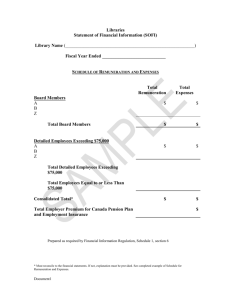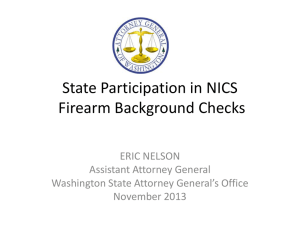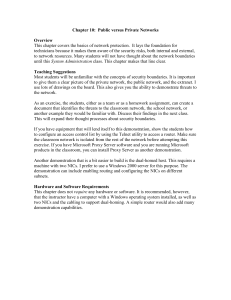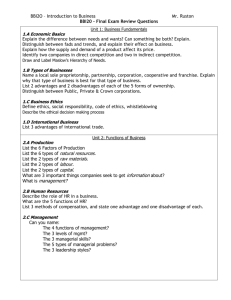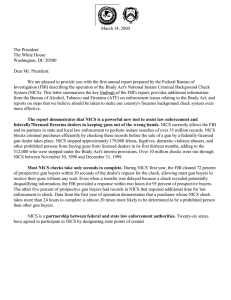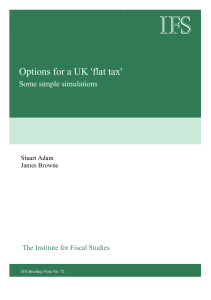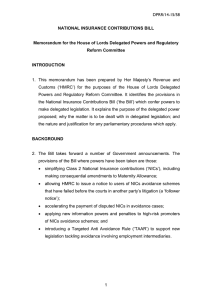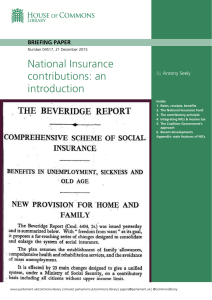Taxing Remuneration: principles and practice. The legal and policy framework
advertisement
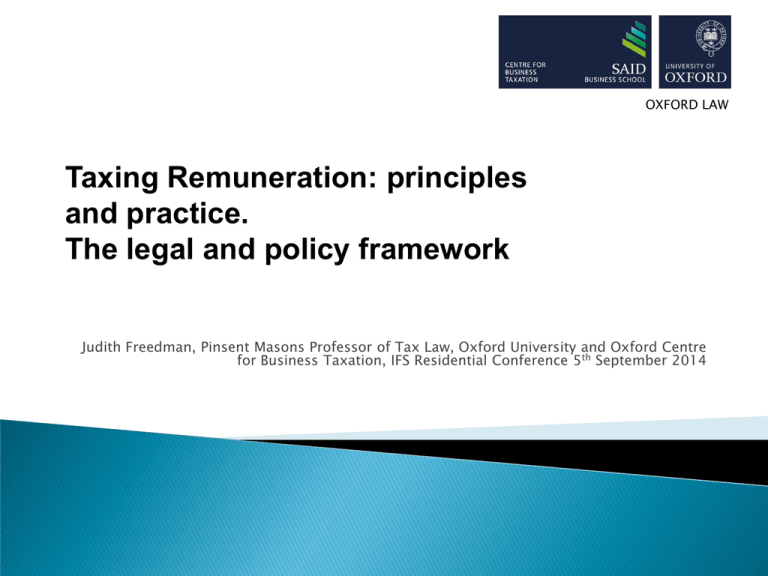
OXFORD LAW Taxing Remuneration: principles and practice. The legal and policy framework Judith Freedman, Pinsent Masons Professor of Tax Law, Oxford University and Oxford Centre for Business Taxation, IFS Residential Conference 5th September 2014 Aim to provide a framework for subsequent debate Is getting back to basics useful? Political pressure Practical pressure Starting from where we are Leads to detailed, pragmatic proposalsOr piecemeal fragmented reform. Fundamental principles provide benchmark for evaluation even if unattainable OED – “Money paid for work or service” Leaving aside what counts as ‘money’ for next sessionNeutrality as objective? ◦ Between different types of work? ◦ Different types of relationship? Distinguish based on risk levels? Level of entrepreneurship? How can tax be attuned to this? Should we tax returns on capital differently? Even if yes- what is a return on capital? Disguising income from labour as income from capital Distinguish tax on capital gains- might arise from labour too? Economic relationships partially determined by legal form Spectrum not binary: sole traders, partnerships, employees, company shareholder/director. Align at one boundary, may worsen at another Purely administrative reasons for differences or are there substantive ones? Confusing the picture- National insurance contributions- link to employment rights Mode of calculation National Insurance contributions Nb “Reduced contributions for self-employed not attributable to reduced benefit eligibility” = £2.85 billion. 2013/14 Estimated costs of tax expenditure and structural reliefs HMT- https://www.gov.uk/government/statistics/main-tax-expendituresand-structural-reliefs Subsidy to self-employed- why? Expenses rules Method of collection and time for payment. Tests- should depend on purpose Why do we want to distinguish selfemployed from employees? Employment law tests about relationship and protection of employee Is this relevant to taxation? Why does relationship between engager and provider of services make a difference to tax? NICS confuse the picture again Case law- -employment/tort cases designed to govern relationship with engager. Aims to find ‘true agreement ‘ between parties. (Autoclenz) Proxy for practicality of applying PAYE ? Expenses follow PAYE- practicality of making claims Notion that NICS/employment rights/tax should be aligned misconceived? Tests replacing case law Eg agency rules – supervision, direction or control LLP rules- relationship to profit, influence, capital contribution What is the principle that suggests these characteristics require application of PAYE and employee NICs? How will this relate to employment protection? Does it need to? Should we tax all remuneration in the same way regardless of legal form? If that is undesirable or impractical, should we keep the differences to the minimum necessary for administrative convenience? (eg try to align expenses rules?) Is there any justification for substantive differences, other than those actually linked to higher benefits? Extending PAYE- is this the right direction? Merging NICs and income tax- is it impossible? Can we do it step by step? Time has come? Employment rights?
